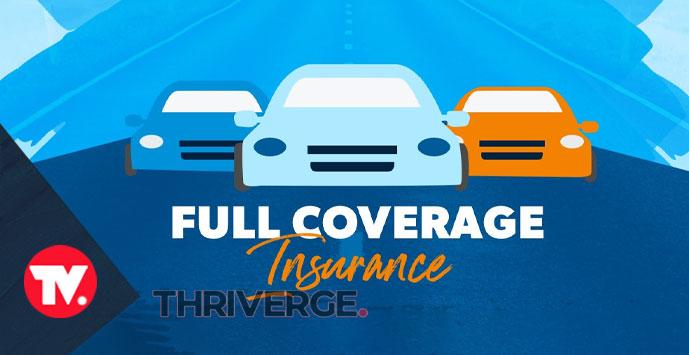Drivers need clarification about which types of car insurance are legally mandatory. Let’s clear up the mystery! As an insurance expert, We’re here to explain exactly which coverages you need to stay protected and street-legal.
This comprehensive guide will explore must-have insurance like liability and collision, plus “optional” coverage you’d regret skipping, like rental reimbursement. You’ll get insider tips on choosing adequate limits and deductibles so you don’t pay for gaps in coverage you didn’t even know existed.
By the end, you’ll master the matrix of state-by-state required insurance and gain peace of mind knowing you have the right policies for your needs. No more guesswork or paying fines for lapsed coverage. Together, we’ll uncover the precise plans that keep you shielded from financial disaster on the road. Hit the ignition – it’s time to eliminate confusion about mandatory car insurance once and for all!
Depending on where you live in the US, you may be required to have certain types of car insurance coverage. Some examples of required coverage include collision coverage, bodily injury coverage, and rental car reimbursement.
Basic Auto Insurance Coverage is Required in All US States
Almost every state in the US requires you to have some form of car insurance. There are different insurance policies, and you should be sure you have the appropriate coverage on your car insurance.
Most basic auto policies include liability, bodily injury, and uninsured motorist coverage. In addition, many states require additional types of insurance. These include collision, comprehensive, and medical payment coverage.
Liability insurance covers your car, your property, and other drivers’ property if you have been involved in a car accident. It also protects your wages and assets if you are injured in a car accident.
Most basic auto policies also include comprehensive coverage. Comprehensive coverage pays for damages to your vehicle if you are in an accident, regardless of who caused the accident. Moreover, if your car is stolen or damaged by weather, this coverage will pay for its replacement.
1. Bodily Injury Coverage
Almost all states require some form of car insurance coverage. Among the most common types of coverage are bodily injury and property damage liability insurance. Both types of coverage can protect you from substantial costs.
Bodily injury coverage helps you cover medical bills and pain and suffering for others. It also can cover legal fees and court awards. In addition, bodily injury coverage can pay for the funeral costs of an accident victim.
Property damage liability insurance can also cover the expenses of another driver’s vehicle. In some states, there may be a minimum amount of coverage required. You can also buy more coverage than is required by law.
Bodily injury coverage usually has a per-person limit, meaning that you will only be responsible for the injuries of the person you hit. You may be liable for the difference between the maximum limit and the actual cost of the injury.
2. Collision Insurance
Collision insurance is essential because it can pay for your vehicle’s repair after a car accident. Collision insurance also helps protect you if you are in a hit-and-run accident. A hit-and-run accident occurs when a driver is injured in an accident but does not come to a safe stop.
Collision coverage also covers you for damage caused by trees and other objects that might otherwise break your windshield or other parts of your car. This includes damage caused by heavy winds. In the event of a total loss, insurance companies will pay you the actual cash value of your vehicle.
Collision insurance is not required by law but can be added to your auto insurance policy. It can also lower your monthly payments. You will need to pay a deductible, though, and there are different deductibles.
3. Rental Car Reimbursement
Depending on your policy, you may have rental reimbursement coverage. This insurance pays for your rental car costs if you are involved in a covered accident.
This coverage is usually included as part of a comprehensive policy. You may have a limit on how much you can claim, or it may be limited to a specific type of vehicle. The cost can be a small fraction of a day’s rental, or you may have to pay it all out of pocket. It can be a lifesaver when you have an extended car repair job.
Rental car reimbursement coverage can be helpful, especially if you are a single driver or don’t have much to spare. The rental cost can be a large chunk of your budget, and a repair can take weeks.
4. Medical Payments Coverage
Adding Medical Payments coverage to your car insurance can help you pay your deductible, copays, or medical bills after a car accident. This insurance is usually optional, but it can be beneficial.
Medical payment coverage is designed to cover medical expenses in a car accident regardless of who was at fault. It can pay for injuries to the victim and the passengers in the vehicle. In most cases, it also pays for pedestrians and cyclists hit by a car.
To cover out-of-pocket costs, a high limit is necessary. You can typically choose a limit of up to $1,000 with insurance companies. You can pay for your deductible and the remaining medical expenses with a higher limit.
Choosing the correct limit is essential. Medical payment coverage is different for every insurance company. Some companies offer higher limits, and other companies offer lower limits. It would be best if you shopped around for coverage.




